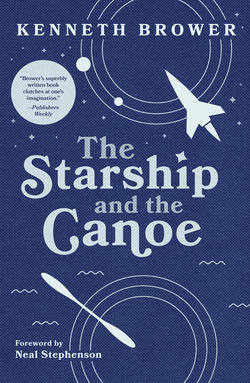Читать книгу The Starship and the Canoe - Kenneth Brower - Страница 8
На сайте Литреса книга снята с продажи.
1 Boom Boom Boom
ОглавлениеAs long as Freeman Dyson can remember, his thoughts have been on the stars. Those thoughts have not been commonplace. Dyson is one of the foremost theoretical physicists this planet has produced. At the very top of the ivory tower, among the membership of that preternaturally brilliant, uncombed fraternity who doodle equations on napkins, who forget to wear their galoshes, and who tend in midsentence to depart conversation, and the world, for new calculations on how the universe is put together, Dyson is regarded as a man with a special gift. More than one of his colleagues have described his place as “stellar.” He is a principal architect of the theory of quantum electrodynamics. He has made contributions to the theories of statistical mechanics and matter in the solid state. He has worked in pure mathematics and in particle physics. He helped design a very successful nuclear reactor.
But Dyson’s preoccupation has been space. He has not been content, like Einstein, to probe space with his phenomenal intuition, nor, though he writes well, to travel there, like Asimov, by his pen and imagination. He wants to go in person. He has helped design a craft to take him.
In 1958 Dyson took a leave of absence from the Institute of Advanced Studies at Princeton and moved to La Jolla, California, where he joined a group of forty scientists and engineers working on a project called Orion. His colleagues in La Jolla were all brilliant and were all dead serious. They intended to explore space themselves, bodily. They had no hope for conventional rocketry as a means for reaching much of anything beyond the moon. The enormous energy required for a voyage to the planets and beyond could only be nuclear. They worked out a system they called nuclear-pulse propulsion. From a hole in the bottom of the Orion spaceship, nuclear bombs would be dropped at intervals and detonated. The shock of each shaped charge, and debris from it, would strike a pusher plate at the ship’s bottom, sending the ship forward. Orion would bomb itself through space at enormous speeds. It would be equipped with shock absorbers to protect crew and machinery from the nuclear jolts, and with shielding against the heat and radiation.
It was crazy, of course, except apparently it wasn’t. Orion was supported by the Nobel laureates Harold Urey, Niels Bohr, and Hans Bethe. General Curtis LeMay liked the idea, and Werner von Braun followed its progress respectfully. Even NASA contributed some money.
Dyson and the others worked out detailed plans for a ship that would quickly carry eight men and a hundred tons of equipment to Mars and back. This solar-system model became the heart of the project, and most of Dyson’s energy went into it. He was personally curious about Mars, and about Saturn as well, for these were places he hoped to visit in the flesh. But Dyson is a man much concerned with human destiny, and his attention soon ranged beyond his own solar system and his own lifespan. Immortality for the human race requires colonization of the stars, he believes, or at very least, of the comets. He sketched out plans for a gargantuan ark, a starship the size of a city and powered by hydrogen bombs. Riding a monstrous concatenation of explosions, thundering silently through the void, leaving behind it a trail brighter than a thousand suns, this vessel would centuries hence take his descendants, frozen if necessary, to Alpha Centauri or another star.
George Dyson, Freeman’s only son, has another idea. George wants to build a canoe, a great ocean-going kayak.
